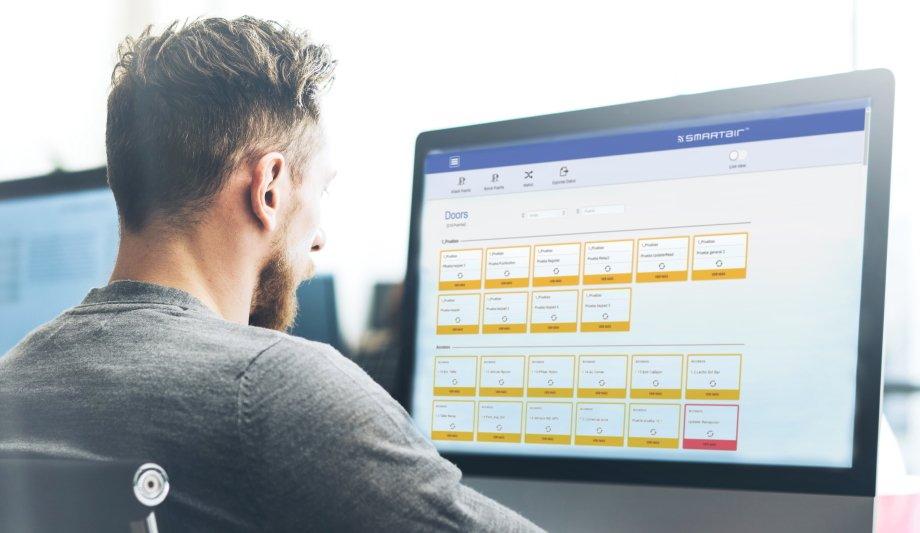Taking the first step into electronic access control may seem intimidating. Yet, as businesses of all sizes and from every industry have discovered, choosing the right system quickly translates to time and money savings. Daily access management tasks become faster or even automated.
Time pressures impact every department in the workplace, including security and facility management. To achieve more with limited resources both time and money is an ever-present challenge.
Limitations of mechanical security
Security professionals attempting to make access control more efficient may be held back by mechanical security. The work created when staff lose their key or leave for another job is expensive and time-consuming.
The inflexibility of physical keys presents a problem when cleaners or other contractors require safe access to specific areas or at certain times of the day.
Transition to wireless access
Below are 5 ways security and facility managers have tackled these and other challenges effectively by switching mechanical locking for wireless electronic access control.
1. Slashing key management workload
“At Vejle Friskole in Denmark, mechanical key management ate up “a very long time, approximately 5 hours a week,” explains Since SMARTair portfolio has locks to fit multiple types of opening, everyone can access it with a single credential Henrik Kækel, the school’s Technical Service Officer. Now keys have been replaced by a SMARTair® access control system. Over 80 doors and cabinets are secured wirelessly with SMARTair devices.
Approximately 250 students, teachers, and parents each carry their own fob, programmed with individual access permissions. Because the SMARTair portfolio has locks to fit multiple types of opening, everyone at the Friskole opens doors and cabinets with a single credential.
Easy key management
"It was really bad [before] because we had big problems with keys that were lost,” adds Henrik Kækel. “There was a lot of work in key administration.”
Today, Vejle Friskole staff spends around 5 minutes a week managing their access system. “It's incredibly easy to figure out... it takes 1 minute to code a student,” he says.
2. Saving money on security administration
Racecourse managers at the Hippodrome Côte d’Azur faced a familiar dilemma: How to stop duplicable mechanical keys jeopardising security for employees and visitors? And how to drastically reduce the time they wasted getting locks replaced when someone lost a key?
They chose a SMARTair Update-on-Card solution and now control access points more efficiently and effectively than with their old key system. Projected long-term cost savings and significant workload reduction convinced Hippodrome managers to choose SMARTair.
Cost-effective access control
Flexible credential management enables an individual access to around 200 doors in six separate structures They can delete users or lost cards instantly and collect audit trails when needed. Easy, flexible credential management enables them to program fine-grained, individual access to around 200 doors in six separate structures.
“In the long term, SMARTair access control is cheaper than keys to manage,” confirms Bernard Arnaud, Supervisor for Accommodations at Hippodrome Côte d’Azur.
3. Assigning granular access rights
Westbridge School’s teaching, administration, and residential buildings require multiple layers of access control, for both staff and students. For years, the inflexibility of a legacy mechanical locking system created management and safety challenges.
“With over 50 staff, we needed more subtlety in assigning access permissions, which you simply can’t do with a bundle of metal keys,” says Joanna Brunton, the school’s Executive Officer. “We now have the ability to set higher security for specific areas of our site, especially over the school holidays when students have gone home,” she says.
“ Our regular maintenance contractors have their own access keys, so they just get straight on with their work without calling us to meet them for access. This keeps our time, and their costs, down.”
Simple to manage
System administration is easy, even for non-specialists. “I taught staff how to use the software and encode access cards,” says Kylie Bray, director at Western Lock Services, who manage hardware maintenance for Westbridge.
“Having a SMARTair system in place has given us peace of mind… It’s quicker, it’s safer and it’s simple,” adds Joanna Brunton.
4. Switching space usage quickly, flexibly, and securely
SMARTair delivers real-time access control via credentials that can be programmed with ease To stand out from the competition in Spain’s fast-growing co-working sector, the founders of ULab wanted the latest in security, accessibility, and design to create their 21st-century business centre.
“In addition to regular daily traffic, weekly traffic can almost multiply by 10 if an event is held,” says Enrique Burgos Pérez, Director at ULab. “We needed an access control system as flexible and convenient as SMARTair.”
Flexible and wire-free, SMARTair delivers real-time access control via credentials that can be programmed and reprogrammed with ease. ULab’s SMARTair system securely manages regular daily traffic of approximately 100 people and has the flexibility to welcome many more temporary visitors when their event space is full.
5. Enabling real-time access
Orihuela’s Colegio Diocesano is a heritage site as well as a place of learning with a museum that requires the protection of the same access system. SMARTair wireless locks control 300 doors around the site.
“The main benefit is the ease of real-time key management from any place and at any time via the wireless online management system,” says IT Manager, Francisco Fernández Soriano. “This increases security for children and for staff because no unauthorised people can enter the school.” SMARTair software makes it easy to issue and cancel credentials for temporary visitors.
Constant monitoring
“In addition to the main entrances and classrooms, access to private spaces such as lifts, offices, staff rooms, the church, the museum, the library, and the IT room is constantly monitored,” he adds.
“Thanks to our SMARTair devices installed at more than 300 doors, the security team can find out who has accessed which space and when at any time.”
















